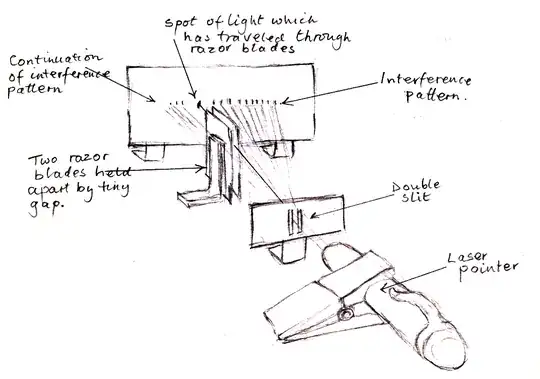I am continuing to experiment with Young's double slit experiment at home. As before I have used a small pen laser and shone the light through double slits formed from very fine wire and black masking tape. This gives the classical bright central dot and a series of bands stretching out on either side. However, I wanted to test whether it was possible to infer that the light was travelling as a photon rather than a wave by incorporating two razor blades positioned back to back very close together to make a 2 or 3 cm elongated single slit between the double slits and the screen. The gap between the blades is of the same order as the double slits. What I see is that the portion of the interference fringe which would have been there if the razor blades were absent is still present. If the light is acting as a wave as it travels from the double slits to the screen shouldn't this be prevented by forcing it to travel within the razor blades where it can't interact with the rest of the wave for 2 or 3 cm? It seems to be acting like a particle here. Can this be possible and if so is it breaking the Copenhagen interpretation?
Here is a diagram of my experiment. A spot of light reached the interference screen after having travelled between the two razor blades. The spot looked exactly like the one which would have been in the same place if the razor blades were not present. There was a small shadow on either side of it which was formed from light being blocked by the metal of the blades themselves.
My query is essential this: Is the light acting as a photon as it passes between the razor blades? If so, does this mean that although the interference pattern fans out and so acts like a wave here, that in fact each path is made up of light acting as particles? And again, if this is so, where exactly does the interference take place? Maybe my next experiment will be to see how close to the double slits the razor blades can be placed without destroying the interference pattern? But I suspect that this needs doing with a single photon source and much finer equipment to really be definitive.

